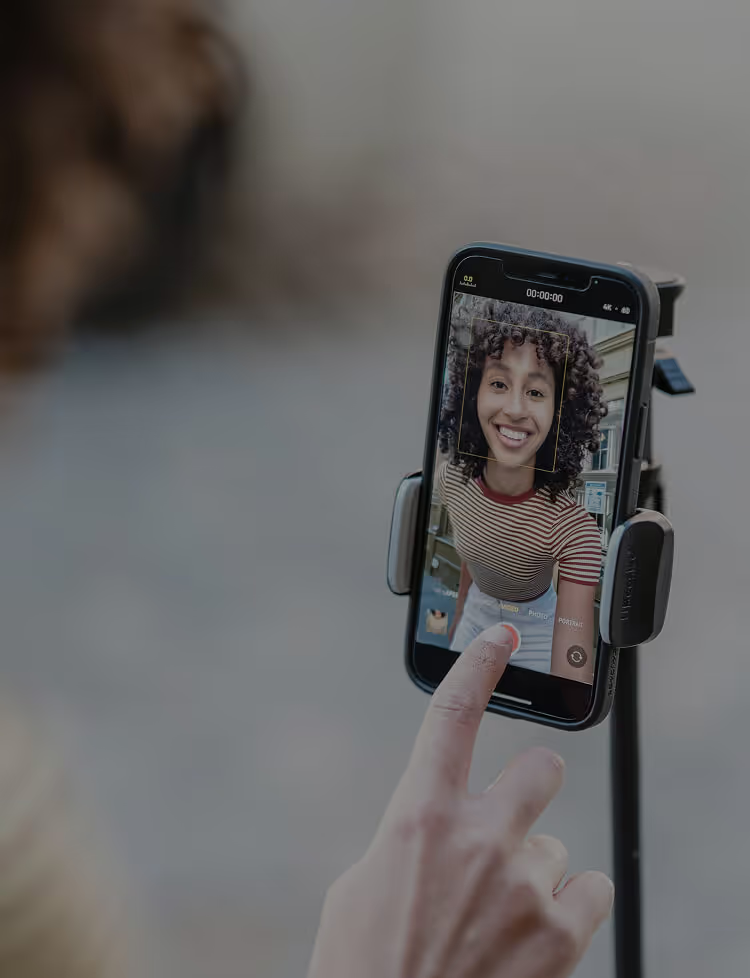In today’s digital age, influencer marketing has become a powerhouse strategy for brands looking to connect with consumers in an authentic + engaging way. But what exactly is influencer marketing? If you’re new to the concept, don’t worry, you’re not alone.
Influencer marketing can seem like a buzzword, but at its core, it’s a simple and effective way to promote your brand through individuals who have influence over your target audience. Let’s break it down.
Defining Influencer Marketing
At its most basic level, influencer marketing is a form of social media marketing where businesses partner with individuals (influencers) who have a large following + credibility within a specific niche. These influencers leverage their platform to promote products, services, or ideas, often in a more organic and relatable way than traditional ads.
Think of it as the modern-day word of mouth, just with more followers and hashtags.
The Rise of the Influencer
Influencer marketing hasn’t always been around. In fact, it only really became a hot topic in the last decade as social media platforms like Instagram, YouTube, and TikTok exploded in popularity. These platforms allowed individuals to cultivate dedicated followings based on shared interests, hobbies, or expertise, making them ideal partners for brands that want to reach a specific audience in a personal yet still professional way.
Today, influencers are everywhere. They range from high-profile celebrities with millions of followers to micro-influencers with a smaller, more niche but highly engaged community. Regardless of size, influencers wield a unique power in today’s marketing landscape: the ability to shape opinions + influence purchasing decisions.
Types of Influencers
Not all influencers are created equal, and depending on your marketing goals, you may want to collaborate with different types of influencers. Here’s a rundown of the most common influencer categories:
1. Mega-Influencers
These are the big-name celebrities, athletes + public figures with massive followings — think: the Kardashians, Cristiano Ronaldo, Hailey Bieber, and more. Mega-influencers have millions of followers, but their partnerships tend to come with a hefty price tag. They’re best suited for brand campaigns looking to make an impact on a global scale.
2. Macro-Influencers
Macro-influencers have a sizable following (typically between 100,000 to 1 million followers). While they may not be household names like celebrities, they are still well-known within their niche. These influencers are perfect for brands targeting a large audience, but still want to maintain some level of relevance + authenticity.
3. Micro-Influencers
Micro-influencers typically have a smaller but highly engaged following (ranging from 10,000 to 100,000 followers). The beauty of micro-influencers is that their audiences tend to be more loyal and niche. They often focus on specific topics, such as fitness, beauty, food, or travel, which makes them ideal for businesses looking to connect with a particular segment of consumers.
4. Nano-Influencers
Nano-influencers are the smallest of the bunch, often with fewer than 10,000 followers. While their reach may be limited, their influence can be mighty. Nano-influencers often have an ultra-tight-knit relationship with their followers, making their recommendations feel even more personal + trustworthy. For brands with a local or highly specialized target audience, nano-influencers can be a goldmine.
How Does Influencer Marketing Work?
Influencer marketing typically follows a few basic steps. Here’s a quick overview of how it works:
1. Identify Your Goal
First, you need to determine what you want to achieve. Are you looking to increase brand awareness? Drive traffic to your website? Boost sales? Your goals will shape the type of influencer you choose to work with + the content they create.
2. Find the Right Influencer
Once you’ve established your goals, it’s time to find an influencer who aligns with your brand values, target audience + messaging. Look for someone whose followers match the demographics you want to reach. It’s crucial to choose an influencer whose voice feels authentic and whose content style resonates with your brand.
3. Create a Strategy
Next, you’ll work with the influencer to create content that promotes your product or service. This could be anything from an Instagram post showcasing your product in use, a YouTube video with a product review, or even a TikTok challenge or trend designed to go viral. The key is to ensure the content feels natural and aligned with the influencer’s usual style — if it looks too much like a traditional ad, it might fall flat.
4. Collaborate + Execute
Once the strategy is in place, the influencer will post the content, and you can track its performance. A good influencer marketing campaign will generate buzz, increase engagement + drive measurable results, whether through clicks, conversions, or increased brand visibility.
5. Measure Results
After the campaign, take time to analyze how well it performed. Did it meet your goals? What metrics were most impacted? Influencer marketing is all about building relationships, so take note of what worked + what didn’t for future campaigns.

The Benefits of Influencer Marketing
If executed well, influencer marketing can have a range of benefits for your brand:
1. Authenticity
One of the major advantages of influencer marketing is its authenticity. Consumers today are more skeptical of traditional advertising, which can often feel inauthentic or overly polished. Influencers, on the other hand, have built trust with their followers over time + their endorsements are seen as more genuine. This can significantly boost your brand’s credibility.
2. Targeted Reach
When you partner with an influencer, you gain access to a highly targeted audience that aligns with your niche. Whether it’s a fashion influencer catering to a Gen Z audience or a wellness influencer focusing on healthy living, influencer marketing allows you to reach the right people at the right time—an ideal situation for both parties involved.
3. Increased Engagement
Influencers tend to have more engaged communities than traditional brands. Followers trust their recommendations, interact with their content + often act on their advice. This heightened engagement can translate into more interactions with your brand, leading to increased website traffic, social media followers, and ultimately sales.
4. Cost-Effectiveness
Compared to traditional forms of advertising, influencer marketing can be more cost-effective, especially when working with micro or nano-influencers. The ROI on these campaigns can be significant, as their highly targeted + engaged audiences tend to be more responsive to product recommendations.
5. SEO + Content Generation
Influencers often create content that can be repurposed for your own marketing efforts. Whether it’s photos, videos, or blog posts, influencer content can enhance your SEO strategy + provide valuable assets for social media marketing. Plus, the more content your brand has circulating online, the more likely it will be discovered by new audiences.
The Challenges of Influencer Marketing
While influencer marketing can yield fantastic results, it’s not without challenges. Here are a few potential obstacles to consider:
1. Finding the Right Influencer
Finding the perfect influencer who truly aligns with your brand can be tricky. Some influencers may have large followings but lack engagement, while others may have a smaller audience that isn’t the right fit for your product. It’s imperative to do your research + find an influencer who reaches your target audience and matches your brand’s tone and values.
2. Measuring ROI
Measuring the success of an influencer marketing campaign can sometimes be tricky, especially when it comes to long-term brand awareness. While clicks + conversions are easy to track, some benefits, like increased trust or word-of-mouth, are harder to quantify.
3. Potential for Backlash
Influencers are human, and sometimes they misstep. Whether it’s a poorly executed campaign or an influencer caught in a scandal, there’s always the risk of your brand being associated with controversy. That’s why it’s vital to choose influencers carefully and to be able to pivot if things go south.
How to Build a Winning Influencer Marketing Strategy
Want to get started with influencer marketing? Follow these steps:
1. Define Your Goals
Are you looking to increase brand awareness, engagement, traffic, or sales?
2. Find the Right Influencers
Look for influencers with strong engagement, authentic content, and an audience that aligns with your brand.
3. Collaborate on Creative Content
Great influencer content is authentic + engaging — not overly scripted.
4. Track Performance + ROI
Influencers often create content that can be repurposed for your own marketing efforts. Whether it’s photos, videos, or blog posts, influencer content can enhance your SEO strategy + provide valuable assets for social media marketing. Plus, the more content your brand has circulating online, the more likely it will be discovered by new audiences.

Is Influencer Marketing Right for Your Brand?
Influencer marketing is worth exploring if you’re looking to increase brand awareness, engage with a targeted audience, and drive sales. The key to success lies in choosing the right influencers, setting clear goals, and measuring results.
Final Thoughts
Influencer marketing is a powerful tool for brands looking to tap into the influence of social media personalities to boost their visibility, credibility + sales. By partnering with the right influencers, creating authentic content, and measuring results, brands can connect with consumers in meaningful ways and build long-lasting relationships.
So, whether you’re a seasoned marketer or just dipping your toes into the world of influencer collaborations, one thing’s for sure: the power of influence is real, and it’s here to stay. To find the perfect team to support your influencer marketing efforts, get started by booking a call with a Marketing Strategist.









